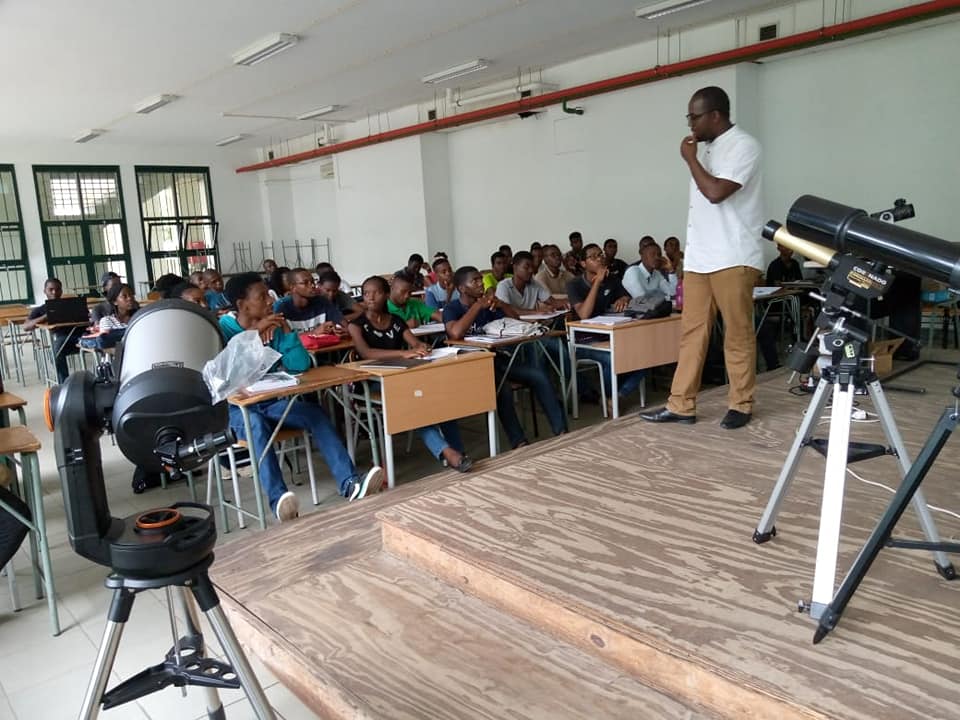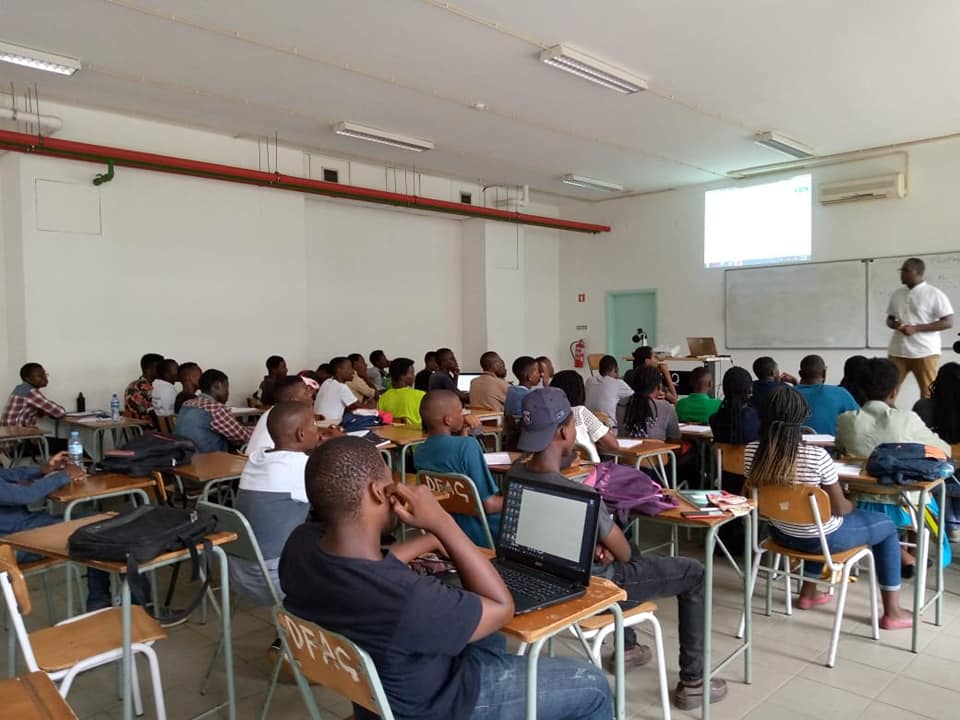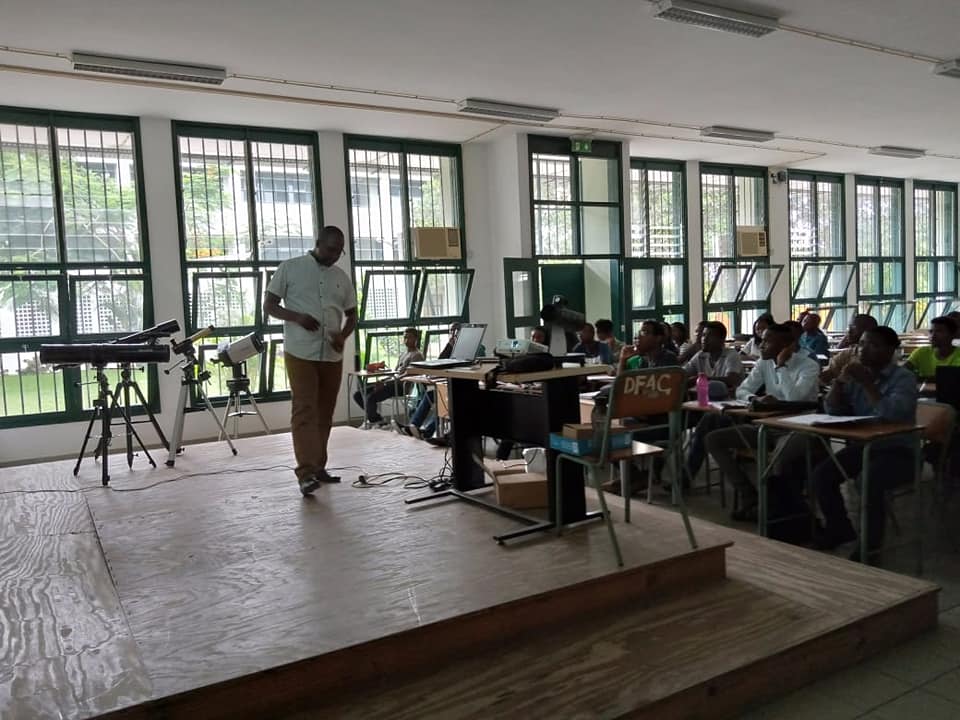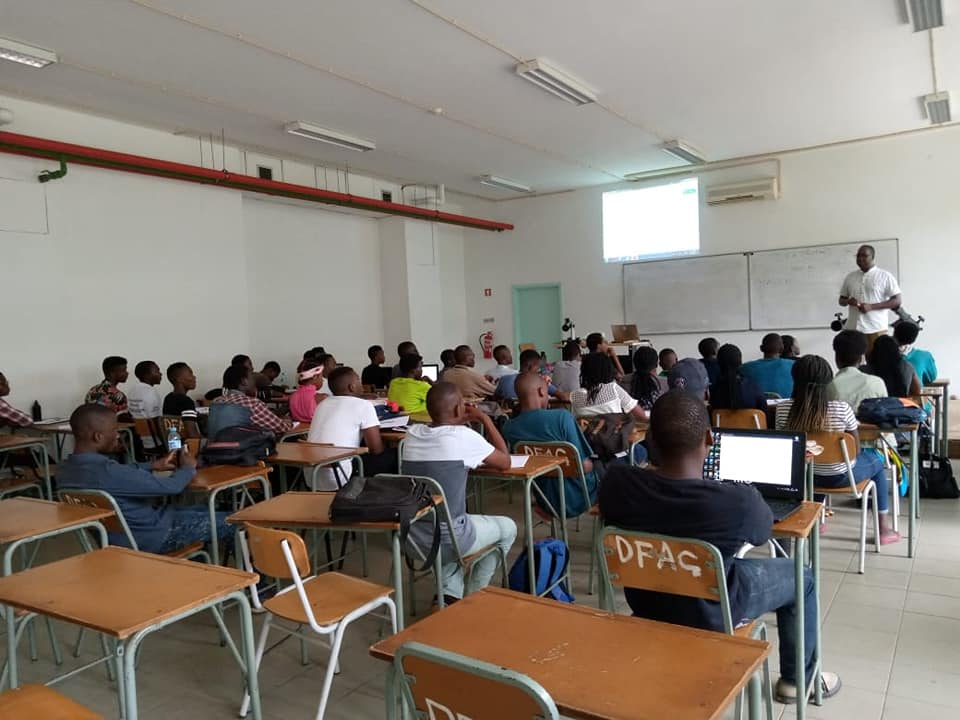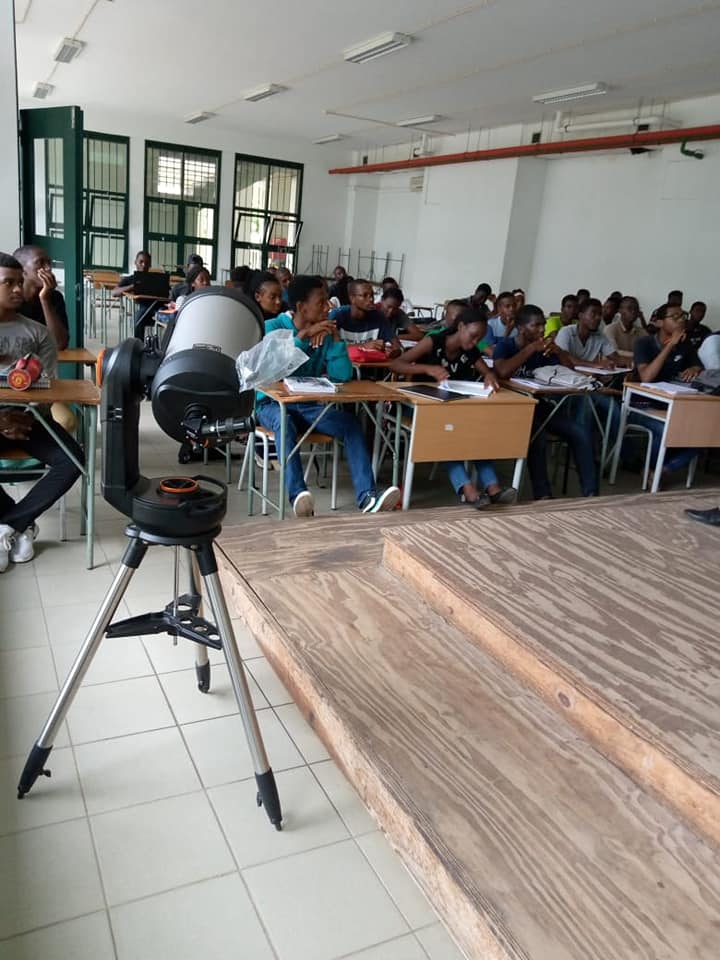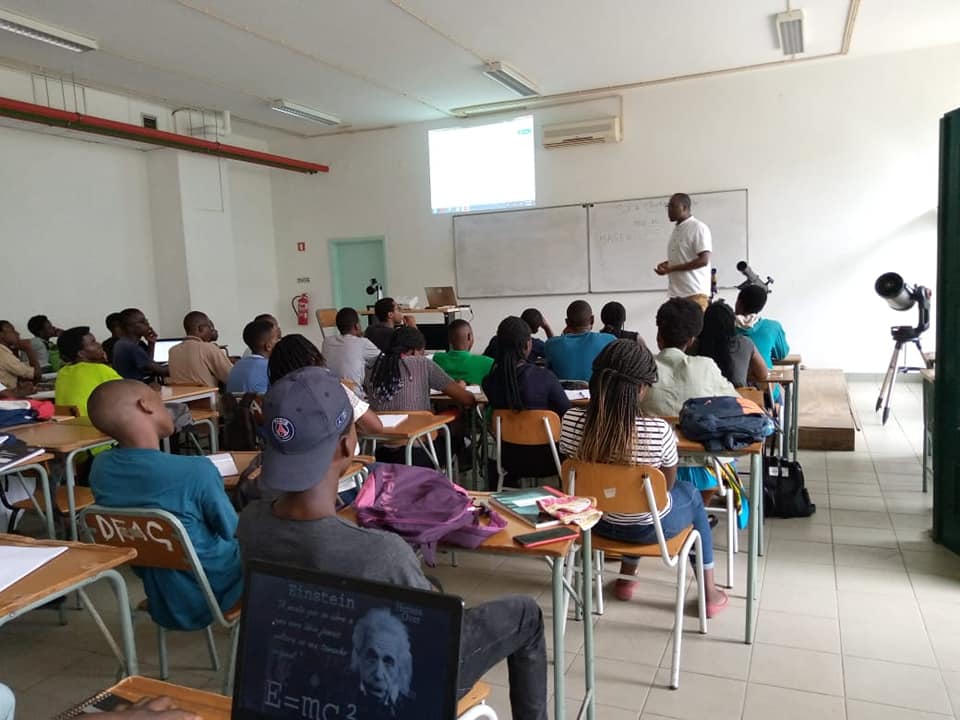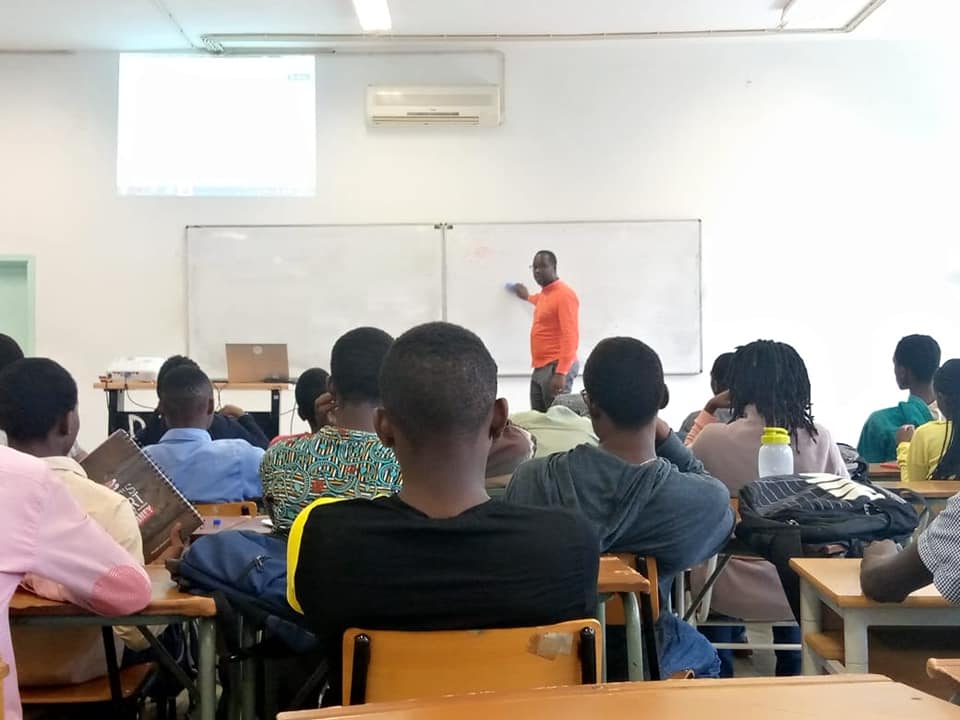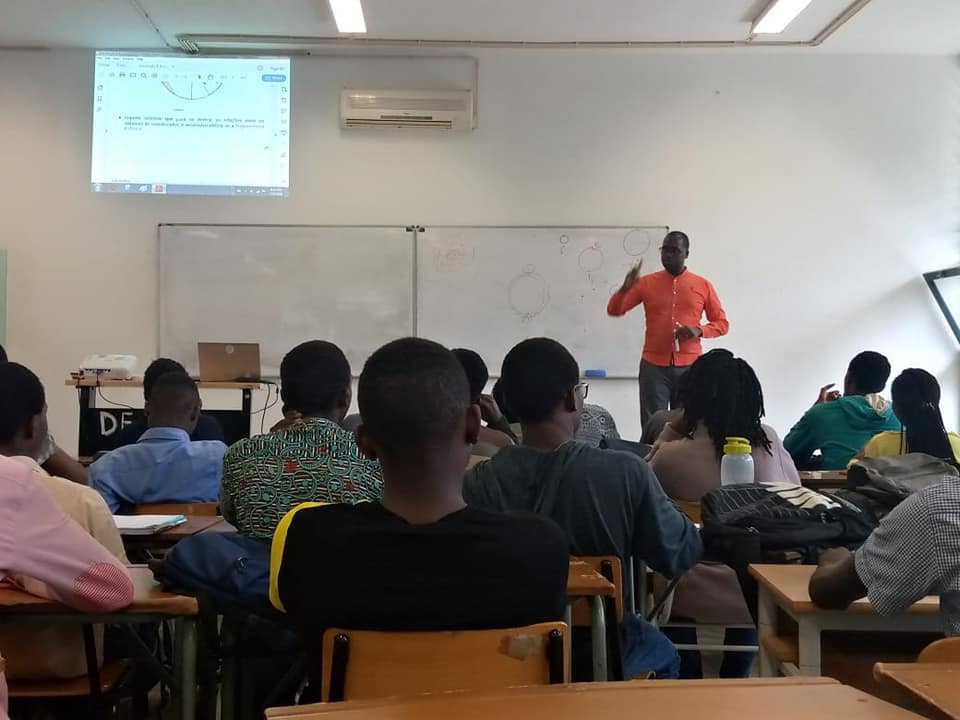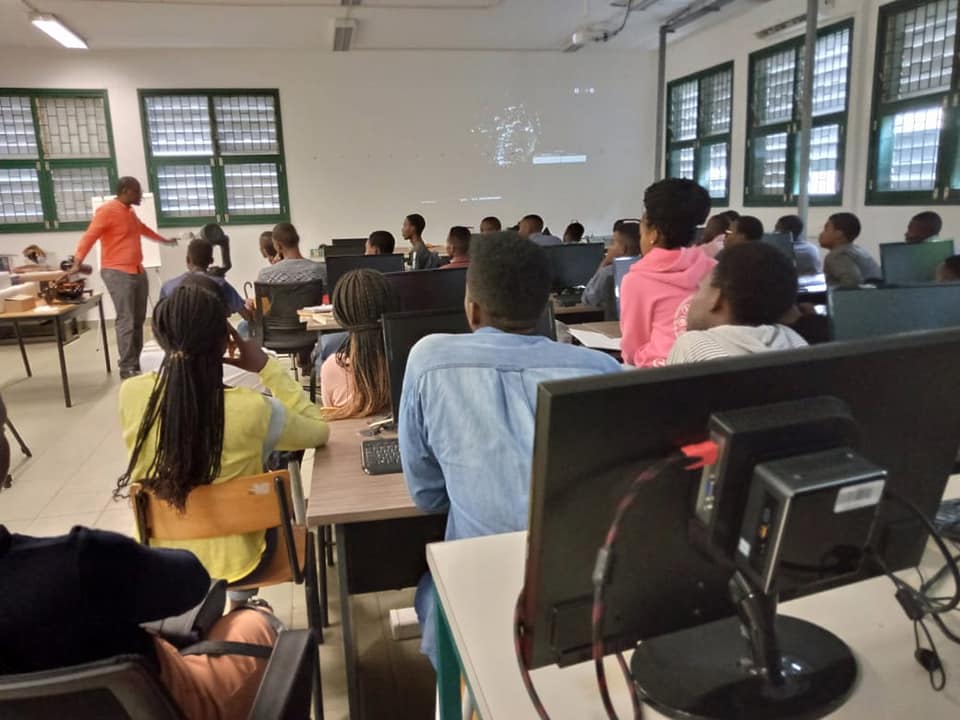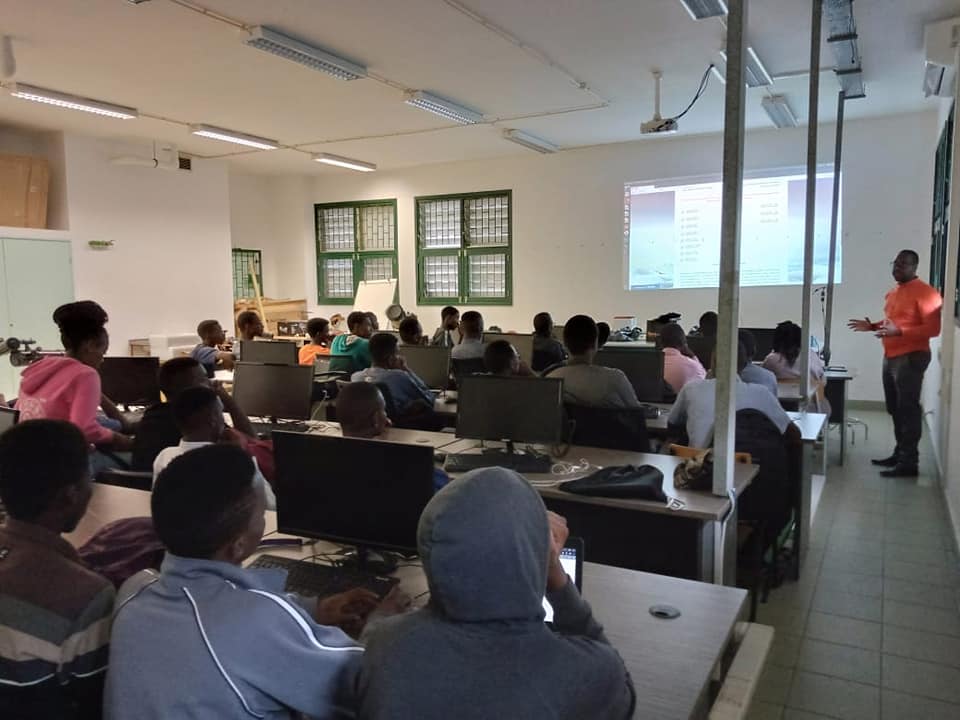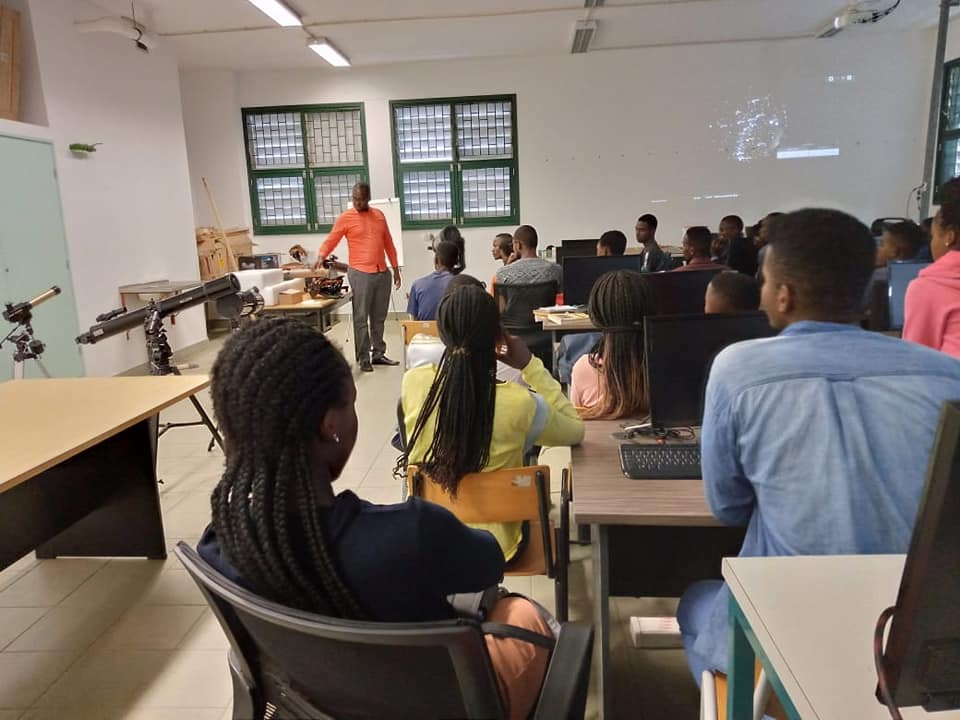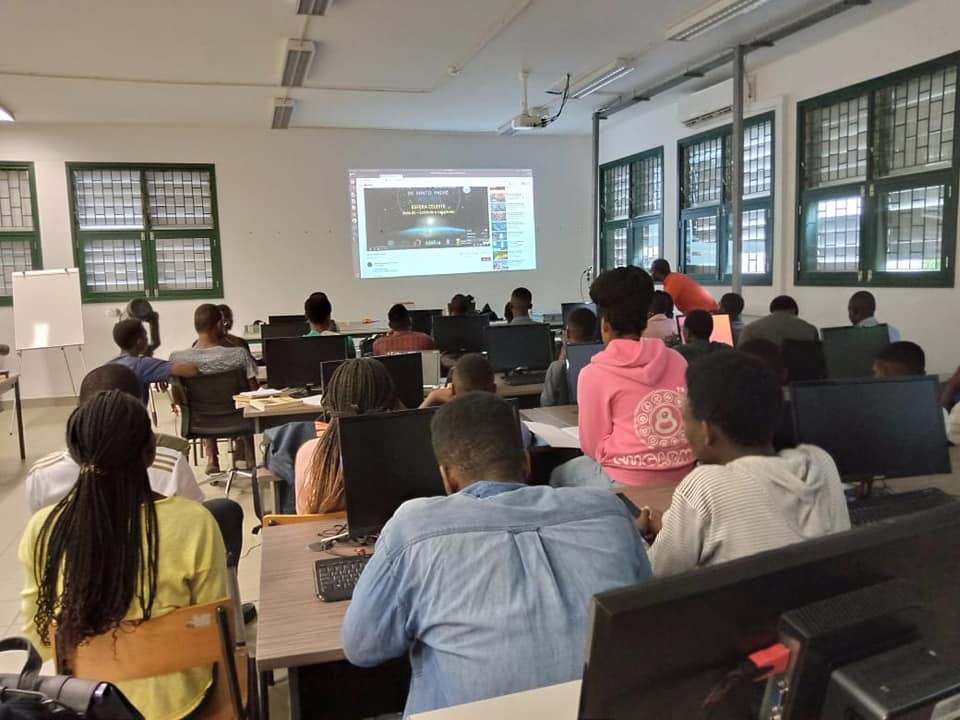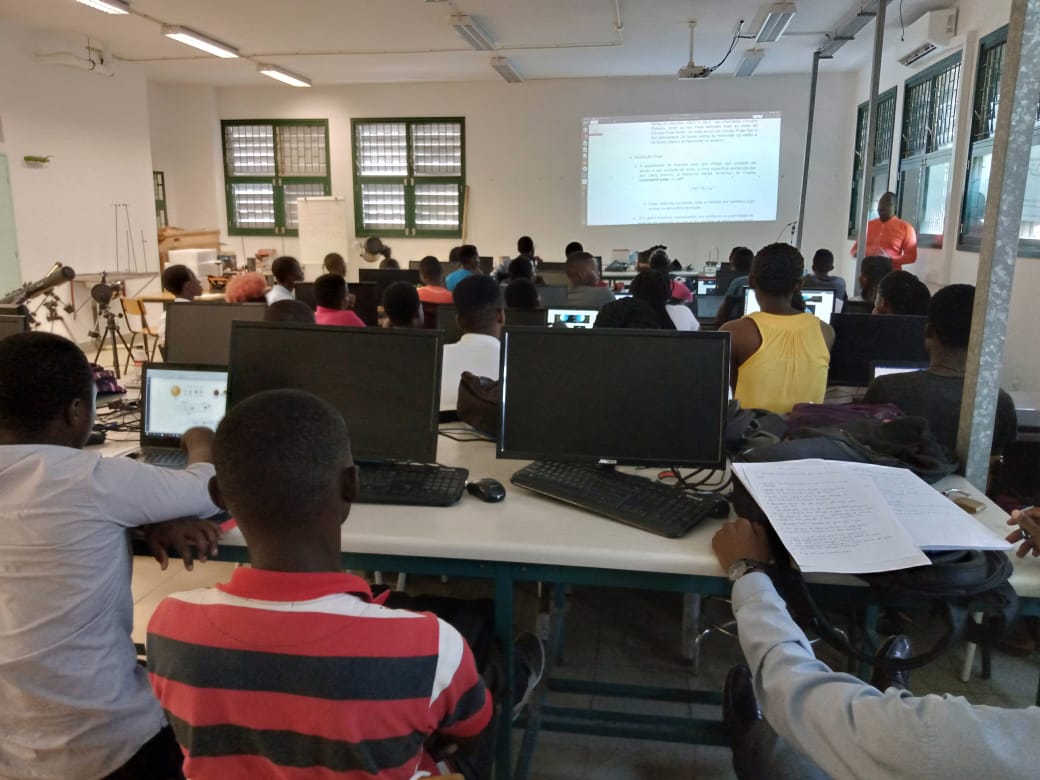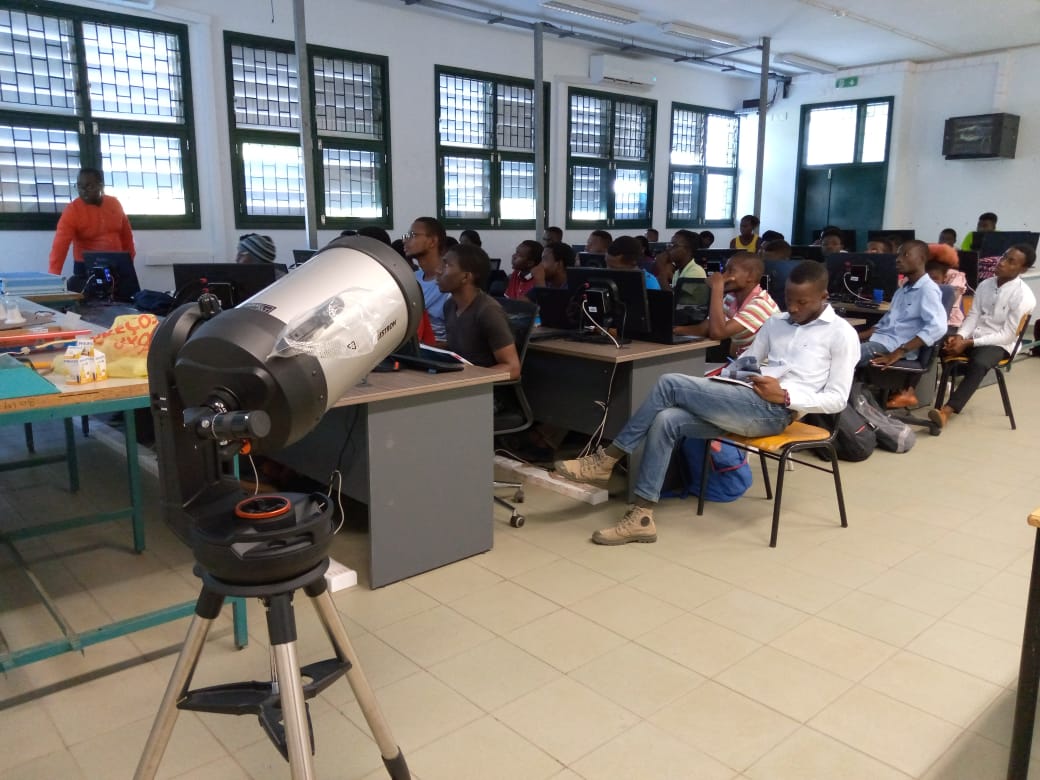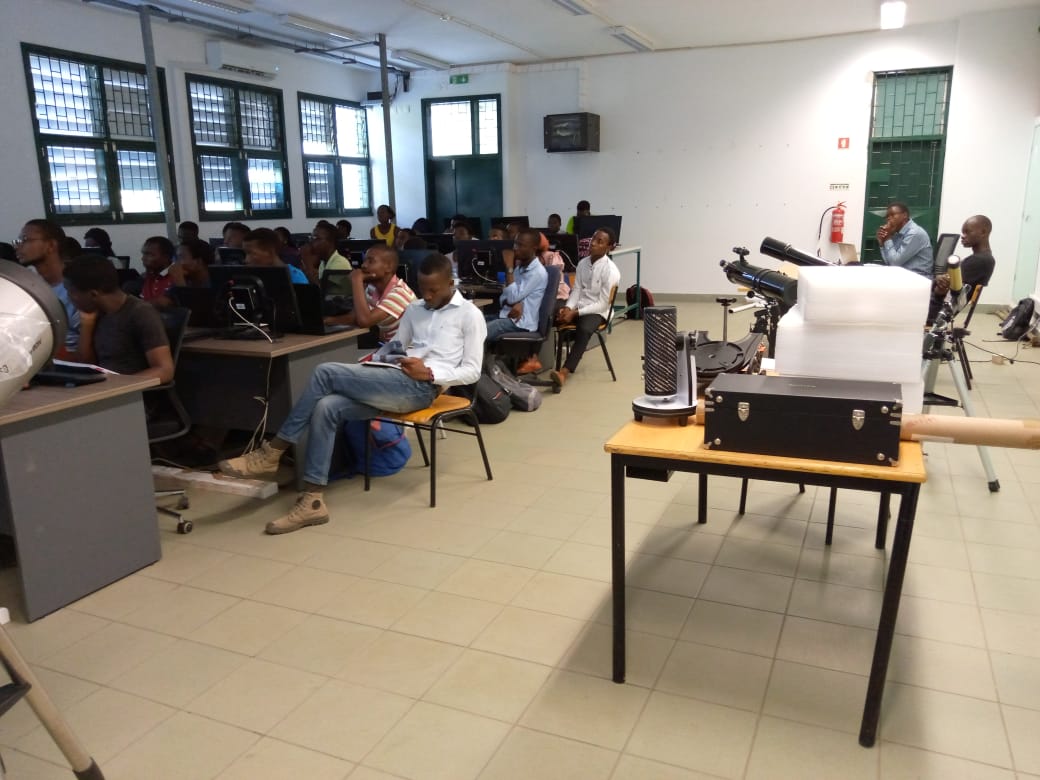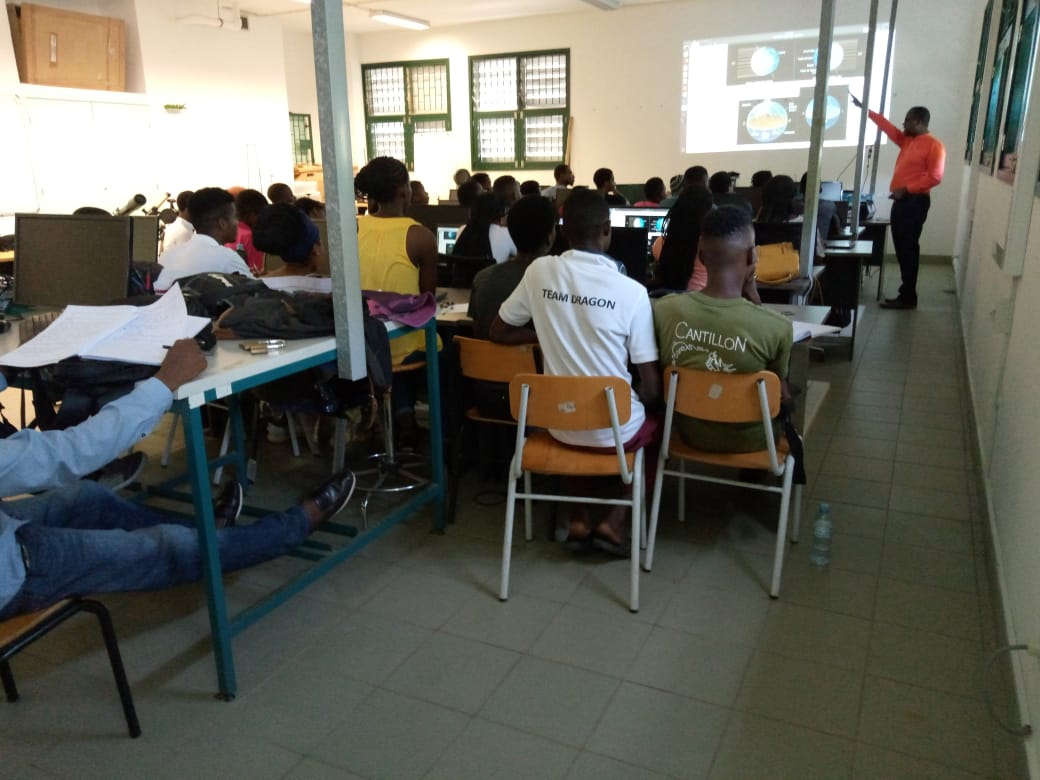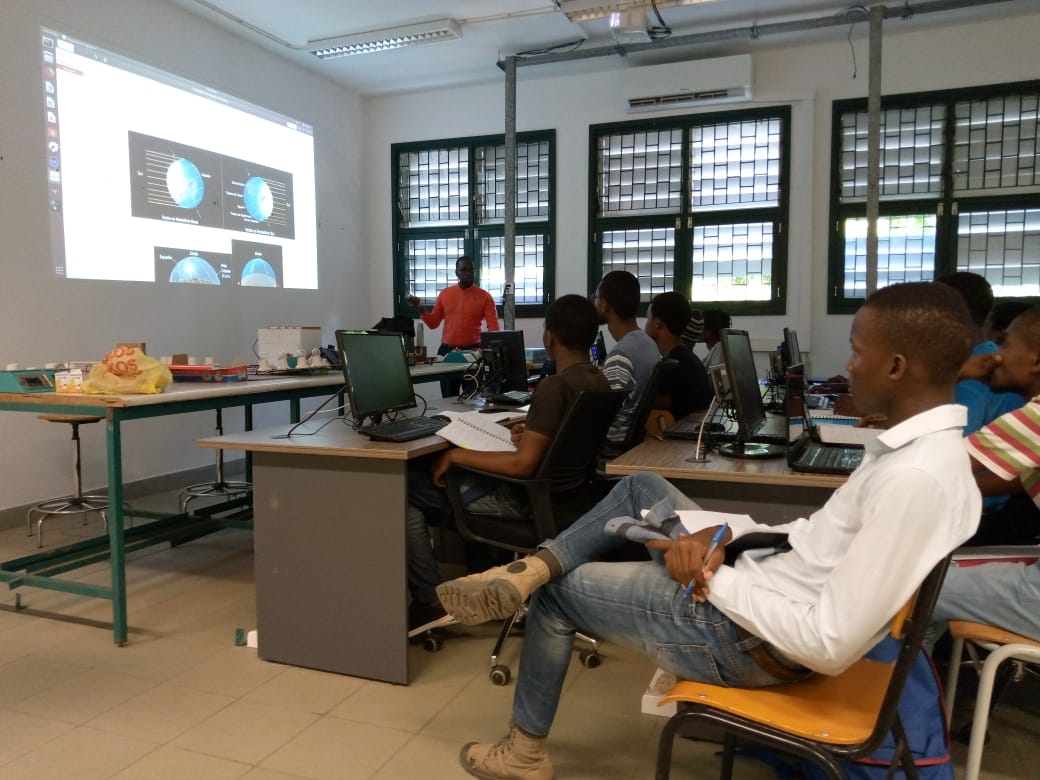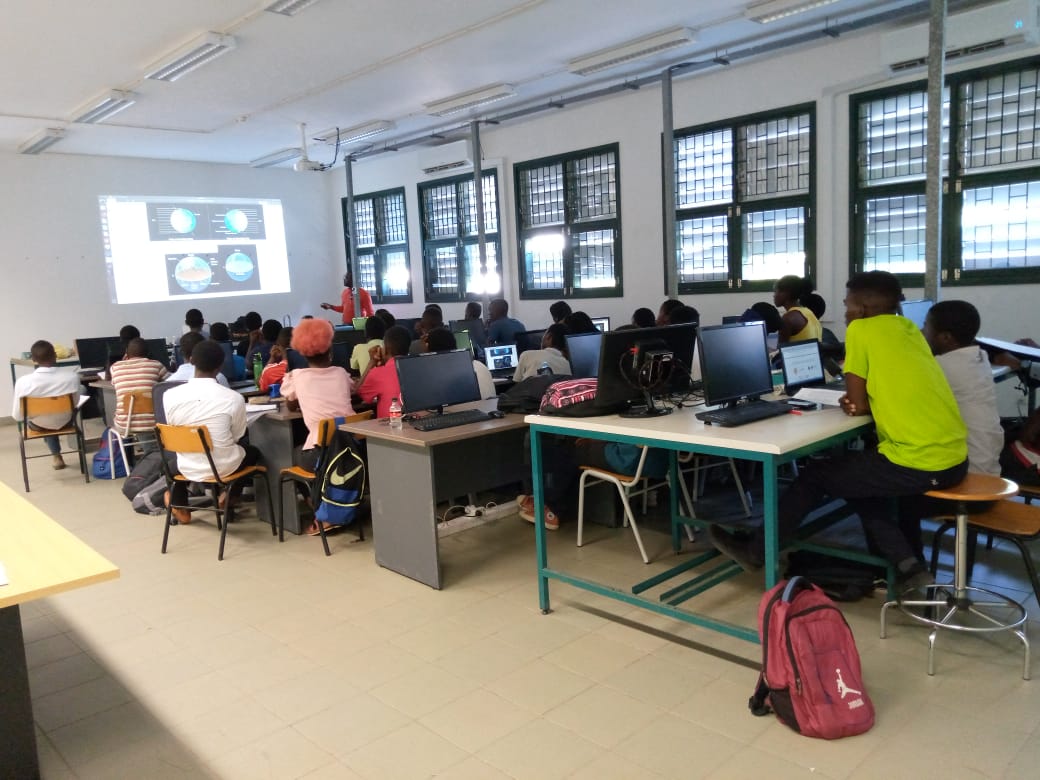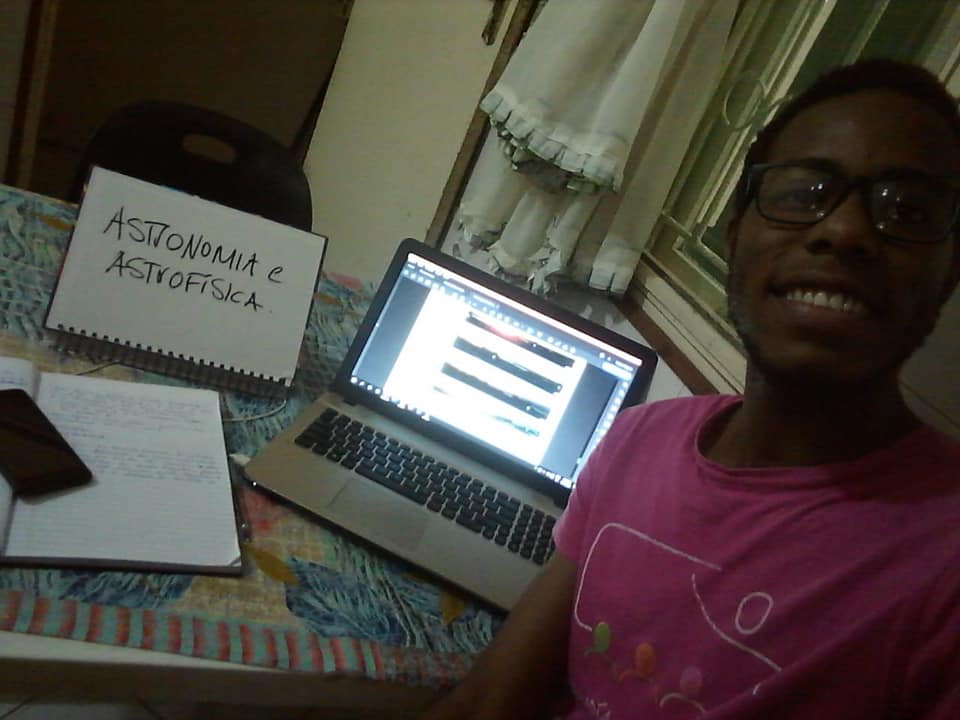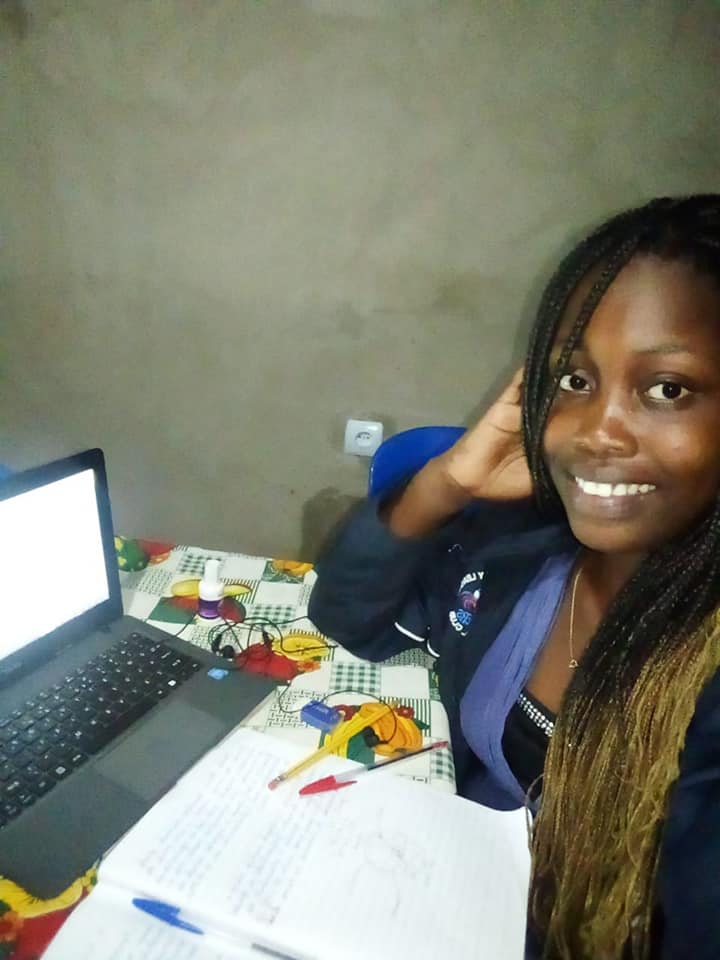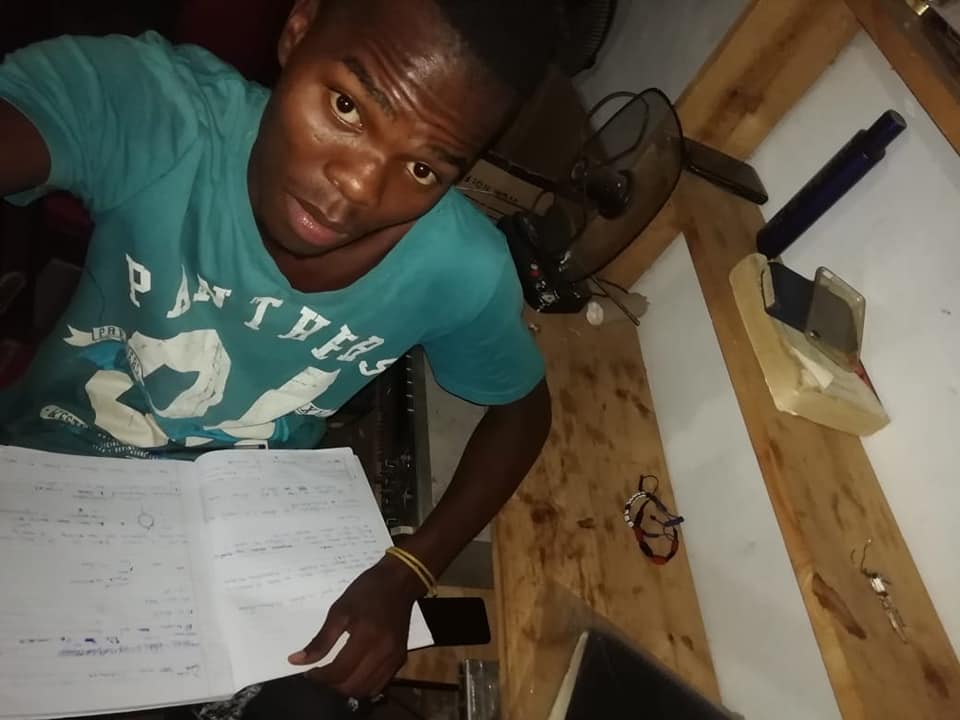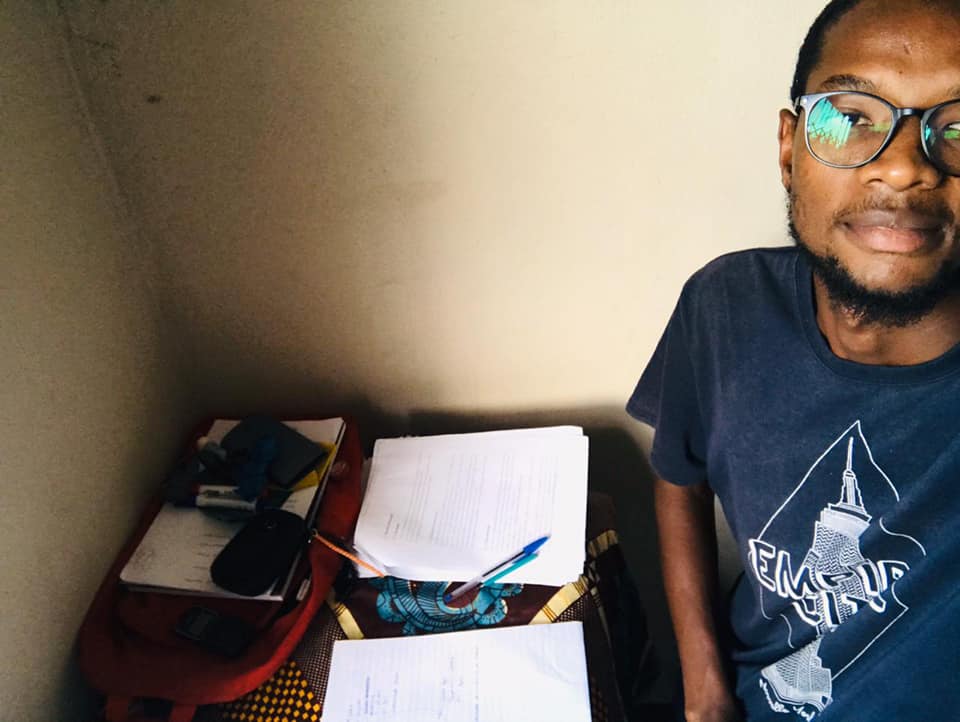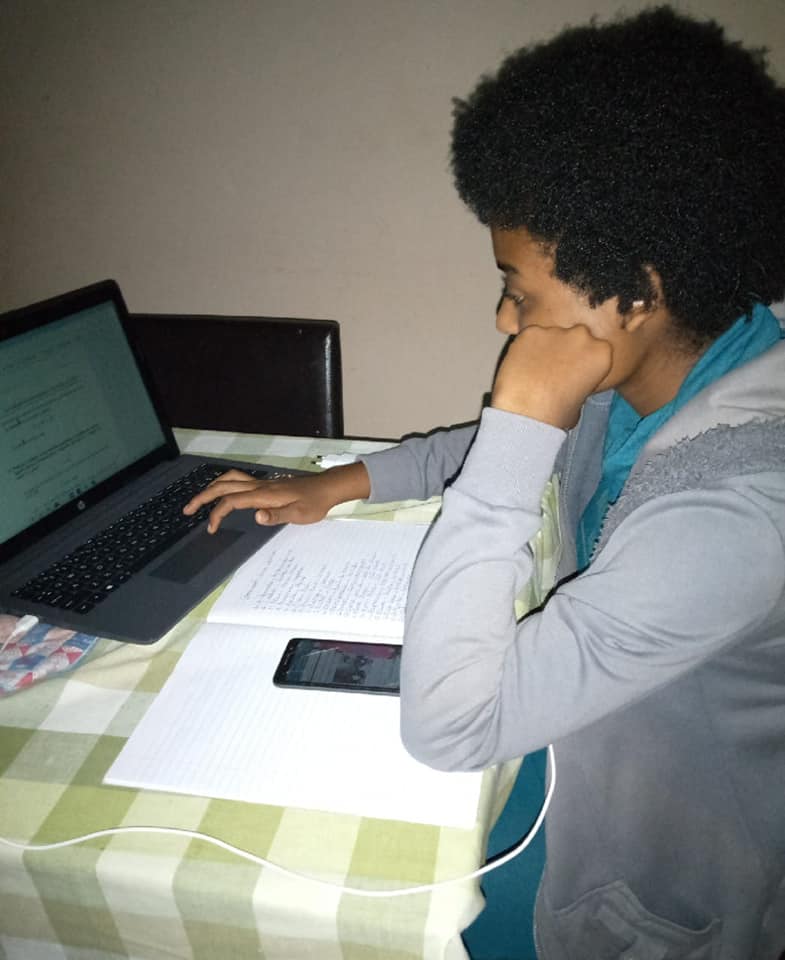Aulas (Lecturers)
Use o Blog ou o Formulário de Contacto Para Comunicares Comigo numa das Páginas da Website
Use the Blog or Contact Form to Communicate with Me on one of the Website Pages
|
O Prof. Doutor Cláudio Moisés Paulo é Docente na Universidade Eduardo Mondlane, afecto ao Departamento de Física desde 2004. Ele tem trabalhado nas seguintes áreas: Meteorologia, Física, Astrofísica e Conforto Ambiental (Arquitectura).
|
The Prof. Dr. Cláudio Moisés Paulo is a Lecturer at Eduardo Mondlane University, assigned to the Department of Physics since 2004. He works in the following areas: Meteorology, Physics, Astrophysics and Environmental Comfort (Architecture).
|
Introdução a Astronomia e Astrofísica
(Introduction to Astronomy and Astrophysics)
|
Esta é uma disciplina básica com 3 horas por semanas disponíveis para o seu lecionamento por um período de 16 semanas.
Em termos de competências temos o seguinte: a) Competências Genéricas: ter noções básicas da Astronomia e Astrofísica, sabre relacionar os diversos conceitos da Astronomia e Astrofísica. b) Competências Específicas: conhecer a esfera celeste e o sistema de coordenadas, conhecer a trigonometria esférica e posição do sol, saber fazer cálculos dos eclipses, conhecer o sistema solar e a escala do Universo. Desta forma, os seguintes temas são propostos: 1. Esfera celeste e os sistemas de coordenadas. 2. Trigonometria Esférica e Posições do Sol. 3. Estações do Ano e Insolação Solar. 4. Medidas do Tempo. 5. Lua e as suas fases. Eclipses. 6. Cálculo das sombras e simulações. 7. Órbita dos Planetas. As leis de Kepler e de Newton. 8. Efeitos de maré e precessão do eixo da Terra. 9. Sistema Solar e Planetas Extra Solares. 10. Sol - nossa Estrela. Estrelas binárias. 11. Origem da vida e vida extra-terrestre. 12. Escalas do Universo. Galáxias. Universo e Cosmologia. Importa referir que antes do tema 1 é necessário ter uma aula introdutória onde se trata do seguinte: a) Considerações gerais: Astronomia; Definição e sua Importância. Diferença entre Astronomia e Astrologia. Classificação da Astronomia. Telescópios. Astronomia na Antiguidade. Definição de Constelação. Lista alfabética das constelações, em Latim e Português. Para se conseguir alcançar os objectivos da disciplina teremos aulas expositivas, demonstrações e "hands on activities". Serão realizados dois testes onde a média aritmética irá produzir a nota de frequência. A nota final é a média aritmética da nota de frequência e da nota de exame final. Para cumprir com o programa proposto para a disciplina, será usado o seguinte link: 1. Oliveira Filho, K. S. and Oliveira Saraiva, M. F., astro.if.ufrgs.br, online course. cc Como material complementar será usado o seguinte material: 1. Carroll, B. W. and Ostlie, D. A., 2017, An Introduction to Modern Astrophysics, Second Edition, Cambridge University Press. 2. Uclan, 2016, Astronomy Course Notes - AA1051, Version 4.3. 3. Freedman, R. A. et al., 2014, Universe, Tenth Edition, W. H. Freeman and Company. 4. Morison, I., 2008, Introduction to Astronomy and Cosmology, Jonh Wiley and Sons Ltd. É muito importante que se saiba que esta disciplina vai ser usada como teste para o uso de novas tecnologias para o ensino (moodle). Será envidado esforço para se implementar as ideias relacionadas com o "Embedding Climate Engagement in Astronomy Education and Research (https://arxiv.org/abs/1907.08043). |
This is a basic course with 3 hours per week available for teaching for a period of 16 weeks.
In terms of skills we have the following: a) Generic Skills: have basic notions of Astronomy and Astrophysics, know how to relate the different concepts of Astronomy and Astrophysics. b) Specific Skills: to know the celestial sphere and the coordinate system, to know the spherical trigonometry and position of the sun, to know how to calculate eclipses, to know the solar system and the scale of the Universe. Thus, the following themes are proposed: 1. Celestial sphere and coordinate systems. 2. Spherical trigonometry and Sun positions. 3. Seasons and Solar Insolation. 4. Measurements of Time. 5. Moon and its phases. Eclipses. 6. Calculation of shadows and simulations. 7. Orbit of the Planets. Kepler and Newton's laws. 8. Effects of tide and precession of the Earth's axis. 9. Solar System and Extra Solar Planets. 10. Sun - our Star. Binary stars. 11. Origin of life and extra-terrestrial life. 12. Scales of the Universe. Galaxies. Universe and Cosmology. It is important to mention that before theme 1 it is necessary to have an introductory class where it is about the following: a) General considerations: Astronomy; Definition and its Importance. Difference between Astronomy and Astrology. Astronomy Classification. Telescopes. Astronomy in antiquity. Constellation definition. Alphabetical list of constellations, in Latin and Portuguese. In order to achieve the objectives of the discipline, we will have expository classes, demonstrations and "hands on activities". Two tests will be performed where the arithmetic average will produce the frequency note. The final grade is the arithmetic average of the frequency grade and the final exam grade. To comply with the proposed program for the discipline, the following link will be used: 1. Oliveira Filho, K. S. and Oliveira Saraiva, M. F., astro.if.ufrgs.br, online course. But note that the following information is extremely important: "The texts, graphics and images on astro.if.ufrgs.br are registered and can only be copied in full, including the authors' names on each page:" Texts, graphics and images copied from Astronomy and Astrophysics, available at http: / /astro.if.ufrgs.br, by Kepler de Souza Oliveira Filho and Maria de Fátima Oliveira Saraiva, with ISBN 85-7025-540-3 (2000), ISBN 85-904457-1-2 (2004) and ISBN 978 -85-7861-187-3 (2013). "No commercial use of this material is permitted." As a complementary material, the following material will be used: 1. Carroll, B. W. and Ostlie, D. A., 2017, An Introduction to Modern Astrophysics, Second Edition, Cambridge University Press. 2. Uclan, 2016, Astronomy Course Notes - AA1051, Version 4.3. 3. Freedman, R. A. et al., 2014, Universe, Tenth Edition, W. H. Freeman and Company. 4. Morison, I., 2008, Introduction to Astronomy and Cosmology, John Wiley and Sons Ltd. It is very important to know that this discipline will be used as a test for the use of new technologies for teaching (moodle). Efforts will be made to implement the ideas related to "Embedding Climate Engagement in Astronomy Education and Research (https://arxiv.org/abs/1907.08043). |
|
Aulas Teóricas (Theoretical Classes)
|
Aulas Práticas e Demonstrações (Practical Classes and Demonstrations)
|
|
| ||||
|
| ||||
|
| ||||
| capitulo_3.pdf |
| capitulo_4.pdf |
| capitulos_5_e_6.pdf |
| capitulo_7.pdf |
| capitulo_8.pdf |
| capitulos_9_e_10.pdf |
| capitulos_11_e_12.pdf |
Astronomia e as Mudanças Climática (Astronomy and Climate Change)
|
Este vídeo estará disponível ate o fim do semestre. Mas, encoraja-se ao estudantes a procurarem mais vídeos semelhantes para melhor começar a perceber como é que a astronomia pode contribuir para a percepção dos assuntos ligado as mudanças climáticas. Lembre-se, coloque a legenda na tua língua. Fonte: https://www.youtube.com/watch?v=xRl0c9obbD0
|
This video will be available until the end of semester. But, students are encouraged to look for more similar videos to better start to understand how astronomy can contribute to the perception of subjects linked to climate change. Remember, put the caption in your language. Source: https://www.youtube.com/watch?v=xRl0c9obbD0
|
Teste 1: Parte 2 (60%)
As regras ja foram estabelecidas no WhtasApp
Boa Sorte
| teste_1_de_astronomia_de_2020.pdf |
Galeria de Fotos (Photo Galery)
|
Esta foi a primeira aula de Astronomia em 2020 realizada no dia 21/2 entre as 12:00-15:00 no Anfiteatro Grande do Departamento de Física da UEM. Estiveram presentes 20 estudantes do curso de Meteorologia e 16 do curso de Física. Neste dia tratou-se os assuntos ligados com a Introdução.
|
This was the first Astronomy class in 2020 held on 2/21 between 12:00-15:00 at the Biggest Amphitheater of the Physics Department of UEM & Astrophysics Computer Lab of UEM. Twenty students from the Meteorology course and 16 from the Physics course were present. On this day, the issues related to the Introduction were dealt with.
|
|
Esta foi a segunda aula de Astronomia em 2020 realizada no dia 28/2 entre as 12:00-15:00 no Anfiteatro Grande do Departamento de Física da UEM & Laboratório de Astrofísica e Ciências Espaciais da UEM. Estiveram presentes 21 estudantes do curso de Meteorologia e 16 do curso de Física. Neste dia tratou-se os assuntos ligados a Esfera Celeste e Sistemas de Coordenadas Astrónomicas.
|
This was the second Astronomy class in 2020 held on 2/28 between 12:00-15:00 at the Biggest Amphitheater of the Physics Department of UEM & Astrophysics Computer Lab of UEM. Twenty one students from the Meteorology course and 16 from the Physics course were present. On this day, the issues related to the celestial sphere and astronomical coordinates systems were dealt with.
|
|
Esta foi a terceira aula de Astronomia em 2020 realizada no dia 13/3 entre as 12:00-15:00 no Laboratório de Astrofísica e Ciências Espaciais da UEM. Estiveram presentes 22 estudantes do curso de Meteorologia e 14 do curso de Física. Neste dia tratou-se os seguintes assuntos: 1. Trigonometria Esférica e Posições do Sol; e 2. Estações do Ano e Insolação Solar.
|
This was the third Astronomy class in 2020 held on 3/13 between 12: 00-15: 00 at the Astrophysics and Space Sciences Laboratory of UEM. 22 students from the Meteorology course and 14 from the Physics course were present. On this day, the following subjects were dealt with: 1. Spherical trigonometry and positions of the sun; and 2. Seasons and Solar Insolation.
|
|
Comecei cedo a pensar em Auxiliar as minhas Aulas via online. Usei sempre https://claudiompgalanhane.weebly.com/aulas.html e WhatsApp Group. Agora a migrar para Moodle. COVID-19 mostrou que eu estava no caminho certo. Os Estudantes em Iniciação em Astronomia da UEM nunca pararam de trabalhar. Agora estão na máxima força rumo ao teste 1. Constrangimentos não faltam, Eu confesso que são muitos e bem pesados. Mas estou junto com os estudantes a fazer o impossível para o ganho mútuo. Importa referir que os estudantes estão em: Maputo( Marracuene, Laulane, Magoanine A, Magoanine B, Magoanine C, T-3, São Dâmaso, Mahotas, Bairro Feroviário, Singathela, Patrice, Mozal, Matola-rio, Polana Caniço A, Polana Caniço B, Liberdade, Estádio da Machava, Zimpeto, Machava Sede, Malhampsne), Inhambane(Maxixe), Chimoio, Sofala.
|
I started early thinking about helping my classes via online. I always used https://claudiompgalanhane.weebly.com/aulas.htm and WhatsApp Group. Now migrating to Moodle. COVID-19 showed that I was on the right track. Undergraduate students in Astronomy at UEM never stopped working. Now they are at maximum strength towards test 1. There are many constraints, I confess that they are many and very heavy. But I am with the students doing the impossible for mutual gain. It is important to mention that the students are in: Maputo (Marracuene, Laulane, Magoanine A, Magoanine B, Magoanine C, T-3, São Dâmaso, Mahotas, Bairro Feroviário, Singathela, Patrice, Mozal, Matola-rio, Polana Caniço A, Polana Caniço B, Liberdade, Machava Stadium, Zimpeto, Machava Headquarters, Malhampsne), Inhambane (Maxixe), Chimoio, Sofala.
|
